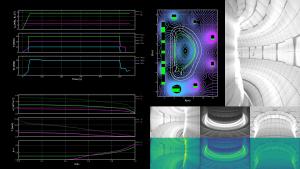How you can support the ITER Research Plan
In describing the R&D program of the ITER device, the ITER Research Plan also identifies the top R&D issues requiring consolidation or refinement. In the interest of making these R&D support needs more widely accessible to the fusion research community, scientists at the ITER Organization have just released a consolidated list as an ITER Technical Report.
Published in 2018, the ITER Research Plan was elaborated with the support of experts from the ITER Members. It is now the key document describing the R&D program of the ITER device.
The document defines the plan for the exploitation of the facility necessary to meet the ITER mission goals. Following the demonstration of First Plasma, operation is divided into two main phases: operation in hydrogen/helium plasmas (Pre-Fusion Power Operation, PFPO) and operation in deuterium and deuterium-tritium plasmas (Fusion Power Operation, FPO) to demonstrate the project's fusion production goals (see Figure 2). This is namely a fusion gain (Q) of Q = 10 for 300-500 s, and Q = 5 for 1000 s and 3000 s (corresponding to steady-state operation).
The ITER Research Plan describes the objectives of each operational campaign consistent with the available systems according to the Staged Approach. It also details the experimental plan to achieve the objectives (including options), and identifies the main risks of the experimental plan and the corresponding mitigation actions.
In addition, the ITER Research Plan identifies a series of issues for which R&D is required to support their refinement or consolidation. These issues cover a wide range of areas—such as the refinement of designs (particularly for the disruption mitigation system and some diagnostics), and the optimization of operational scenarios in the various phases.
Now, the Science Division and the Port Plugs & Diagnostics Division have categorized these issues according to their impact on the ITER Research Plan and have selected a set of issues with high impact, which warrant priority focus in ongoing R&D at the ITER Member fusion research institutes over the next few years. The selected set includes: a) issues related to completion of system designs; b) specific choices and options to be explored in the early stages of the ITER Research Plan; and c) strategic assumptions on the development of the experimental program towards high Q operation.
The set of issues and their categorization by the ITER Organization have been provided to the International Tokamak Physics Activities (ITPA), which coordinates the research done by the fusion research institutes of the ITER Members to support ITER needs, and has been used to focus the ITPA R&D program.
In the interest of making these ITER Research Plan R&D support needs more widely accessible to the fusion research community—and following the recommendation of the ITPA Coordinating Committee—the ITER Organization is making them publicly available as an ITER Technical Report (ITR-20-008).
The support from ITER Member fusion research institutes provides an essential contribution to the further refinement of the Research Plan; making these R&D needs publicly available is intended to strengthen this support. "The key work carried out by the fusion community has been already instrumental in guiding the development of plasma scenarios (see Figure 1) and the tokamak systems—in particular plasma diagnostics—required for ITER to achieve its goals," says Alberto Loarte, Head of the ITER Science Division. "We are hoping that the publication of our consolidated R&D priorities leads to a more effective collaboration between the ITER Organization and the fusion community to further improve the ITER Research Plan."
Download "Required R&D in Existing Fusion Facilities to Support the ITER Research Plan" from the ITER Technical Reports page here.



